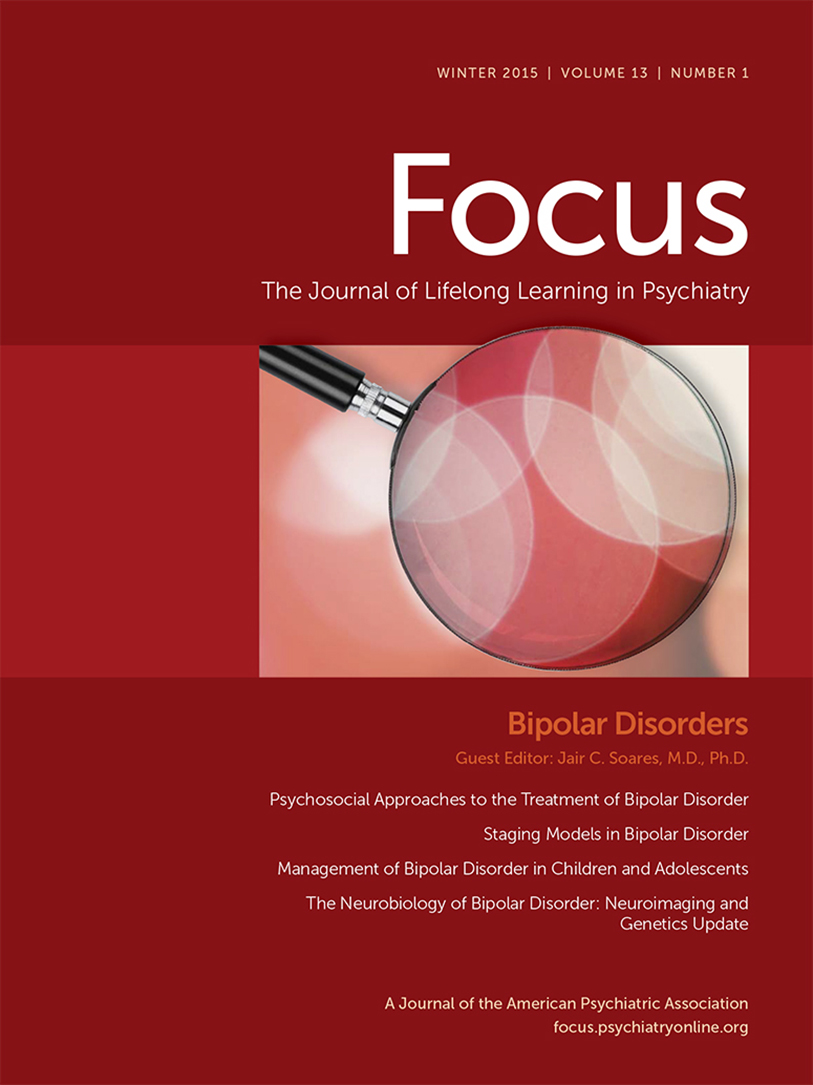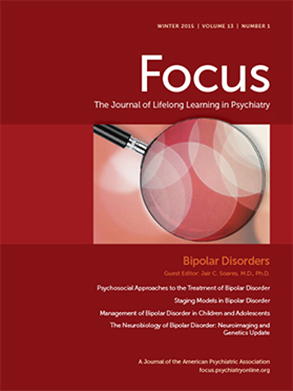Management of Bipolar Disorder in Children and Adolescents
Abstract
Empirical Evidence of the Pharmacological Treatment of Bipolar Disorder in Children and Adolescents with Manic Episodes
Lithium
Antiepileptic Medications
Carbamazepine.
Topiramate.
Lamotrigine.
Valproate.
Second-Generation Antipsychotics (SGAs)
Aripiprazole.
Olanzapine.
Paliperidone.
Quetiapine.
Risperidone.
Ziprasidone.
Summary.
Empirical Evidence of the Pharmacological Treatment of Bipolar Depression in Children and Adolescents
Lithium
Olanzapine/Fluoxetine Combination
Quetiapine
Lamotrigine
Antidepressants
Summary
Treatment-Resistant Bipolar Disorder
Combination Treatments
Psychosocial Interventions in the Treatment of Bipolar Disorder
Cognitive-Behavioral Therapy for Pediatric Bipolar Disorder
Multifamily Psychoeducation Groups
Dialectical Behavior Therapy for Adolescents
Family-Focused Treatment for Adolescents
Interpersonal and Social Rhythm Therapy for Adolescents
Complementary Medicine
Omega-3 Fatty Acids
Psychopharmacological Treatment of Bipolar Disorder with Comorbid Conditions
Anxiety
Substance use Disorders
Attention Deficit Hyperactivity Disorder
Conclusions and Future Directions
References
Information & Authors
Information
Published In
History
Authors
Funding Information
Metrics & Citations
Metrics
Citations
Export Citations
If you have the appropriate software installed, you can download article citation data to the citation manager of your choice. Simply select your manager software from the list below and click Download.
For more information or tips please see 'Downloading to a citation manager' in the Help menu.
View Options
View options
PDF/EPUB
View PDF/EPUBLogin options
Already a subscriber? Access your subscription through your login credentials or your institution for full access to this article.
Personal login Institutional Login Open Athens loginNot a subscriber?
PsychiatryOnline subscription options offer access to the DSM-5-TR® library, books, journals, CME, and patient resources. This all-in-one virtual library provides psychiatrists and mental health professionals with key resources for diagnosis, treatment, research, and professional development.
Need more help? PsychiatryOnline Customer Service may be reached by emailing [email protected] or by calling 800-368-5777 (in the U.S.) or 703-907-7322 (outside the U.S.).

